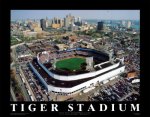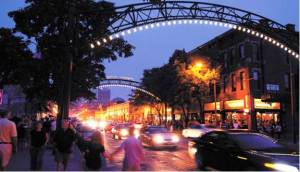When: June 21st, 2008, 7-10 PM
Where: The Buffalo Museum of Science
Who: Open to the public
Where is the Buffalo Museum of Science?
###
Rustbelt Revitalization Effort Founded and Driven by Young People Launches at Buffalo Museum of Science;
‘A Regional Renaissance is Within Our Grasp’
Members of the Great Lakes Urban Exchange (GLUE) and their friends in Buffalo have one message to send from the steps of the Buffalo Museum of Science on the evening of Saturday, June 21st: “Older industrial cities around the Great Lakes can come back. If we have anything to say about it, they will.”
Civically engaged post-boomers in cities like Buffalo, Detroit, and Milwaukee want to put a dent in the cynical speculation, anachronistic stereotypes, innovation-averse attitudes, and inter-city isolation that have stymied progress in their similarly challenged communities for too long.
They know cock-eyed optimism and glossy boosterism aren’t enough. These cityphiles are painfully aware of the problems their homes face: population decline, an underdeveloped workforce, urban segregation, and crumbling infrastructure, to name a few. Their cities need new solutions.
GLUE’s answer: build a diverse network of younger people devoted to equitable, sustainable cities. Put them in touch with each other. Give them an opportunity to exchange ideas and hold multi-sector, multi-city conversations. Empower them to tell stories about their cities using new media in order to get the world’s attention and to bring new people into conversations about public policy’s links to everyday life. Elevate and replicate ideas that work. Rinse and repeat.
After several months in development at Detroit’s College for Creative Studies, GLUEspace, the project’s online home, is ready for prime time. GLUEspace will embody the values of GLUE: inclusivity, dynamism, and innovation. The site will offer more than multi-media, city-focused citizen journalism; it will afford visitors the opportunity to connect with urbanists from Rochester to Minneapolis around the issues that will transform the Great Lakes’ urban communities:
• Environmental justice and sustainability
• Responsible economic development
• Empowerment of communities and individuals
• Quality of place
• Civic participation and government transparency
To commemorate the launch of GLUEspace, the Great Lakes Urban Exchange is holding a celebration of the industrial “rustbelt” and its future potential. The celebration’s theme, “Community Transformation, Reinvesting in the Urban Core,” is being interpreted by a team of local community members ranging from artists and science buffs to active bloggers and students and alumni from the International Center for Studies in Creativity at Buffalo State College.
Attendees will contribute stories about Buffalo for the website in real time via video, live blogging, podcast, and photography. Local innovators will share their “Enhance Buffalo” ideas with the public at stations inside the museum and local artists will present a series of performances intended to symbolize the transition of our economy from sole reliance on heavy industry. The highlight of these will be a sunset bronze “pour” conducted by Simon Griffis of the Ashford Hollow Foundation and a team of molten metal sculptors on the grand front steps of the museum. The products of the pour will be four square panels containing the emblematic images of our logo: urbanism, regionalism, story-telling, and network building.
GLUE was developed by Pittsburgh and Detroit residents Abby Wilson and Sarah Szurpicki to combat negative perceptions about their cities. Its mission evolved from new media boosterism to issue-based network-building and resource-pooling, and from a brain trust of two to a core planning team of over forty young, devoted, and solutions-oriented leaders from GLUE cities Akron, Buffalo, Chicago, Cincinnati, Cleveland, Columbus, Des Moines, Detroit, Duluth, Erie, Flint, Fort Wayne, Indianapolis, Lansing, Milwaukee, Minneapolis-St. Paul, Pittsburgh, Rochester, St. Louis, Toledo, and Youngstown.
GLUE was sponsored in its infancy by the Brookings Institution’s Metropolitan Policy Program through its Great Lakes Economic Initiative (GLEI), building upon the analytic foundation laid by Brookings’ “Restoring Prosperity” and “The Vital Center,” seminal reports about the immediate needs and shared challenges of cities at the core of GLUE’s mission. For more information, visit http://www.brookings.edu/metro.
GLUE has also been made possible by the generous support of the John R. Oishei Foundation and the Regional Institute at Buffalo.
For a complete schedule of other launch activities this summer, please email abby@gluespace.org









You must be logged in to post a comment.